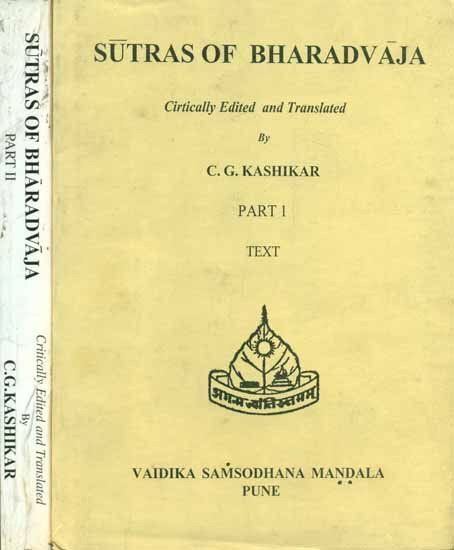Bharadvaja-srauta-sutra
by C. G. Kashikar | 1964 | 166,530 words
The English translation of the Bharadvaja-Srauta-Sutra, representing some of the oldest texts on Hindu rituals and rites of passages, dating to at least the 1st millennium BCE. The term Srautasutra refers to a class of Sanskrit Sutra literature dealing with ceremonies based on the Brahmana divisions of the Veda (Sruti). They include Vedic rituals r...
Praśna 6, Kaṇḍikā 15
[The Āgrayaṇa Sacrifice]
1. We shall now explain the Āgrayaṇa sacrifice.
2. One should offer the first fruit of paddy.
3. There should be seventeen sāmidhenī verses.
4. The procedure should be that of the New-moon sacrifice.
5. In this connection this is the general rule: In all Iṣṭis and Animal-sacrifices, the rules prescribed in the New-moon and the Full-moon sacrifices are to be followed.
6. These rules return by three conditions: accomplishment, proscription and counter-injunction.
7. If a substance in the norm-sacrifice is substituted by a different one in a modification-sacrifice, the latter attains the character of the former. For example, the śara grass (attains the character) of (the normal) Barhis; the śyāmāka grains that of paddy; a (cooking) vessel that of a potsherd; and cooked rice that of a cake.
8. In that case, the mantra is to be suitably modified.
9. The modification (is to be determined) by similarity. For example, the oblations for a single divinity should be regarded as a modification of the oblation for Agni; those for a dual divinity or multiple divinity as a modification of the oblation for Agni-Soma or Indra-Agni.
10-11. (This rule applies in all cases) except the divinities in the norm; just as a cake for Indra, and cooked rice for Soma. (In this way) the divinities in the norm would retain their own place.[1]
12. Where a different oblation is prescribed for a divinity in the norm, for example, a cake to Viṣṇu, the oblation would retain its character.
13. If one has to perform an Iṣṭi or an Animal-sacrifice or a Soma-sacrifice, he should perform it either on the new-moon day or on the full-moon day.
14-15. In connection with (the performance of an Iṣṭi, the rites to be extended) over two days are well-established: One should regard the first day as the parvan day (that is to say, he should perform the preliminary rites on that day), and perform the Iṣṭi on the second day.
16. If the rites are to be performed only within one day, one should finish the preliminary rites on the parvan-day itself, and subsequently perform the Iṣṭi.
17. Or of a combined procedure should be.[2]
Footnotes and references:
[1]:
The procedure of the offerings to these divinities would be determined by that in the norm.
